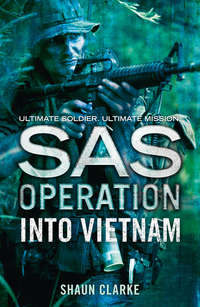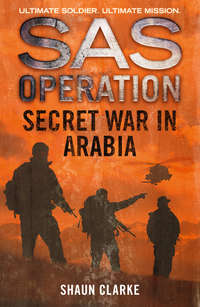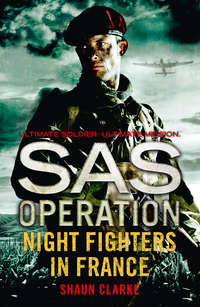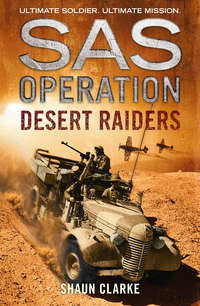
Полная версия
Guerrillas in the Jungle

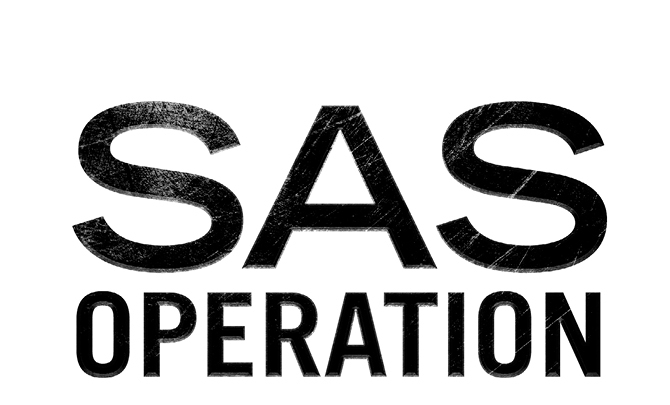
Guerrillas in the Jungle
SHAUN CLARKE

Published by HarperCollinsPublishers Ltd
1 London Bridge Street
London SE1 9GF
www.harpercollins.co.uk
First published in Great Britain by 22 Books/Bloomsbury Publishing plc 1993
Copyright © Bloomsbury Publishing plc 1993
Cover layout design © HarperCollinsPublishers Ltd 2016
Cover photographs © MILpictures/Tom Weber/Getty Images (soldier); Shutterstock.com (textures)
Shaun Clarke asserts the moral right to be identified as the author of this work.
A catalogue copy of this book is available from the British Library.
This novel is entirely a work of fiction. The names, characters and incidents portrayed in it are the work of the author’s imagination. Any resemblance to actual persons, living or dead, events or localities is entirely coincidental.
All rights reserved under International and Pan-American Copyright Conventions. By payment of the required fees, you have been granted the non-exclusive, non-transferable right to access and read the text of this e-book on screen. No part of this text may be reproduced, transmitted, down-loaded, decompiled, reverse engineered, or stored in or introduced into any information storage and retrieval system, in any form or by any means, whether electronic or mechanical, now known or hereinafter invented, without the express written permission of HarperCollins.
Source ISBN: 9780008154974
Ebook Edition © November 2015 ISBN: 9780008154981
Version: 2015-10-15
Contents
Cover
Title Page
Copyright
Prelude
Chapter 1
Chapter 2
Chapter 3
Chapter 4
Chapter 5
Chapter 6
Chapter 7
Chapter 8
Chapter 9
Chapter 10
Chapter 11
Chapter 12
Chapter 13
Chapter 14
Chapter 15
Chapter 16
OTHER TITLES IN THE SAS OPERATION SERIES
About the Publisher
Prelude
The guerrilla camp had been hacked out of the dense jungle and could be seen only from the air. Its centrepiece was a roughly levelled parade ground, about the size of a tennis court, though such a game was unknown to these people. Built in the natural caverns of red and ochre rock camouflaged by the overhanging foliage, the camp quarters consisted of a lean-to thatched with atap palm, with kitchen, lecture room, and sleeping benches for about sixty newcomers. The older hands were housed in an atap further up the hill, above the boulder and overlooking the parade ground.
A babbling stream, providing water for the camp, snaked around the boulder, past the parade ground and back into the dense, steaming jungle. The latrines were built further away, near to where the stream entered the jungle, carrying the excrement and urine to the isolated dwellings that used the same water for washing and drinking. The latrines themselves consisted of a thatched lean-to over a pit full of seething maggots. The stench was atrocious.
Few of the guerrillas were more than twenty-five years of age, most were under twenty, and a surprising number were little more than children. Some of the males wore khaki shorts, shirts and military caps, but most wore no item of uniform and were either dressed like coolies or wearing white shirts, grey trousers and felt hats. Most of them were barefoot, though some wore terumpas – wooden clogs held on by rubber straps.
Almost without exception, the women were in long-sleeved, high-necked white smocks and wide black trousers. All had bobbed hair and used no make-up. The better-educated taught Mandarin and singing; the others worked in the kitchen and did their fair share of the dirtiest, heaviest male chores. Though all of them acted as nurses, seamstresses and general domestics, they expected to be treated just like the men and could be just as merciless when it came to the treatment of prisoners or traitors.
The daily schedule was strict and demanding. Reveille was at first light, 5.30 in the morning, when the crying of gibbons and the clicking of cicadas dominated the chatter of the jungle. At 6.00, when the guerrillas had bathed and brushed their teeth, they took part in the flag-raising ceremony, singing ‘The Red Flag’. Roll-call was followed by a communal reading of the laws and regulations of the Malayan Races’ Liberation Army (MRLA). Calisthenics lasted until 6.30, followed by a cup of tea and a rest period.
At 7.00 they started drilling with weapons. This included practice in jungle-warfare tactics, racing up and down hills, climbing trees and learning various jungle ambush positions. At 8.30 they washed and rested, then had a breakfast of boiled tapioca or rice with greens – fern tops or sweet-potato leaves – followed by a second rest period.
Classes began at 10.00 sharp, with political and military lessons on a daily alternating basis, the former covering Marxism–Leninism, the writings of Mao Tse-tung and the current international situation; the latter, map-reading, tactical theory, lessons in the tactics of the Russian and Chinese armies, and the general principles of guerrilla warfare.
Depending on the length of the lectures, these classes would last until approximately noon, when the guerrillas would break for a snack of biscuits and hot water, with a rest period lasting until 1.00 p.m. From then until 3.00 they would have individual assignments: special instruction in Mandarin or general study groups for the new recruits; preparation for the next lectures by the instructors; jobs around the camp – collecting firewood, cleaning up, ministering to the many sick – then, at 3.00, another arduous hour of drilling with weapons. This was followed by a thirty-minute wash period and, at 4.30, the ‘evening’ meal, not much different from breakfast.
Even during the so-called ‘free period’ lasting until 6.00, they would be compelled to study or practise their drills.
At 6.00, after coffee, there was a parade of all hands to take down the colours and sing ‘The Red Flag’ again. Then the ‘political research’ would begin, with experienced political warriors leading group discussions about the doctrines of Communism. These discussions would include ‘self-criticism’ and ‘mutual criticism’ designed to eradicate the ego. No one smiled. Jokes were rarely made. Throughout every activity, they would repeatedly give one another the clenched-fist salute.
When the discussions ended, at 9.00 p.m. sharp, they went straight to bed.
Given such a harsh, undeviating routine, to be called upon to join a patrol into the jungle often seemed like a blessing.
All of the men and women in that particular morning’s patrol were Chinese Malays. While some had been born in Malaya, others in China and a few in Hong Kong, Borneo or Sumatra, they all spoke Kuo-yii, the national dialect of China and the lingua franca of the jungle. They spoke in a whisper, and then only for the first few minutes; once away from the camp, deep in the jungle, they maintained a resolute silence, communicating only with hand signals.
Their armament for the patrol consisted of a British Bren gun, three antiquated tommy-guns, ten rifles, five shotguns, five pistols and a parang, or Malay jungle knife, shaped like a machete, one of which was carried by each member of the patrol.
From the vegetable gardens and rubber trees at the edge of the camp, they plunged straight into the darkness of the jungle. The ground was covered with a thick carpet of dead leaves and seedling trees, though no grass or flowers were to be seen. A dense undergrowth of young trees and palms of all kinds climbed to a height of about twelve feet, obscuring the giant roots of the trees. Out of the tangled green undergrowth, however, the countless tree trunks rose straight upwards for 150 feet, where they formed a solid canopy of green that almost entirely shut out the sky. The tree trunks, though similar in that they were all of a uniform thickness and straining up towards the light, were of every colour and texture: smooth and black, scaly and ochre-red, pale grey or green with moss, some as finely dappled as a moth’s wing.
The trunks were often hidden by a network of creepers which in places broke out into enormous leaves. Elsewhere, the vines and creepers hung straight down from the branches to the ground, where they had taken root again, looping themselves from tree to tree like a ship’s rigging. Up in the treetops, where the great trunks suddenly burst into branches, were huge hanging gardens of moss and ferns, themselves covered in tangled webs of liana and creepers. This dense canopy of constantly rotting, regenerating, intertwining foliage provided a few windows through which the sky could be glimpsed, but it served mostly to keep out the sunlight.
In this jungle, then, the average visibility for two men standing up was at most only twenty-five yards, varying slightly from place to place. Any confidence that this might have given to the guerrillas was soon lost when they had to leave the jungle and cross a large area of open paddy-fields, where they would have been easy targets for enemy snipers.
Grateful to reach the far side of the fields, they slipped through the open trees of a rubber estate, where sunlight and fresh air were allowed in. In these isolated patches, rattans and other thorns flourished, and the palms, ferns, bracken and seedling trees became so dense that the guerrillas, male and female, had to hack their way through with their parangs – an exhausting task.
By midday the humidity was making them all pour sweat, and when not protected by trees they were exposed to a heat that not only beat down upon their heads but also rose in suffocating waves from the parched ground.
They soon plunged back into the jungle where, though they were protected from direct sunlight, the humidity was even more suffocating. In fact, this jungle was even worse than the one they had left. Known as belukar, it was land that had once been cleared but gone back to secondary jungle, with swampy thickets of thorn, bracken and bamboo even more dense and impenetrable than the original growth. Also, it contained vast stretches of swampy jungle covered with mengkuang, a gargantuan leathery grass with sharp blades, about twenty feet long and four or five inches wide, with a row of curved thorns along each edge. In one hour of back-breaking work, only a hundred yards would be covered.
Nevertheless, though exhausted, sweating, sometimes bleeding, and constantly attacked by vicious red ants, the patrol thought of only one thing: the successful completion of their task.
Soon they came to the outer edge of the paddy-fields, where the kongsi-house, or company house, of the towkay, the merchant who owned the estate, was located, raised high on stilts. At a nod from the leader, two of the guerrillas entered the kongsi-house and dragged the terrified, struggling Chinese man out. They threw him on the ground, kicked him a few times, jerked him to his knees, then bound his hands together behind his back. In this position he was given a short speech about the glories of Communism, informed that he was being punished for his anti-Communist greed, then despatched with a bullet through the head.
This first job completed, the guerrillas took a short break, during which they relaxed in the grass, eating bananas and pineapple, watching the bee-eaters and bulbuls searching for flies overhead. When the break was over, the guerrillas, who had scarcely cast a nod in the direction of the dead man, marched around the edge of the bright-green paddy-field to the kampong itself, which consisted of a few thatched houses on stilts in a grove of coconut palms, fruit trees and hibiscus flowers.
There, they forced the head of the village to provide them with a proper cooked meal – a chicken curry with brinjol (aubergine), eggs, fried salt fish, rice and several vegetables – followed by coffee and sweetmeats. Afterwards they tied the headman’s hands behind his back, made him kneel on the ground, roped his bound hands to his tethered ankles, then made the rest of the villagers gather around him.
A couple of male guerrillas entered the headman’s house and emerged carrying a table between them. Two of the females then went in and dragged out his struggling, sobbing wife.
‘This man,’ the leader of the guerrillas said, pointing to the trembling headman, ‘is an informer who must be punished for his crimes. You will all remain here and bear witness to his punishment. Anyone who tries to leave, or turns his head away, will be shot.’
While the terrified villagers and the shocked headman looked on, the latter’s wife, eight months pregnant, was thrown on to her back on the table and held down by four guerrillas. The leader of the guerrillas then withdraw his parang, stood at the end of the table, between the woman’s outstretched feet, and raised the gleaming blade above his head.
Knowing what was about to happen, the woman writhed frantically, sobbed, vomited and gibbered like a crazed animal. She was practically insane with fear even before she felt the first, appalling cut of the blade, making her release a scream that did not sound remotely human but chilled the blood of all those who heard it.
When the patrol’s leader had finished his dreadful business, leaving a horrendous mess of shredded flesh and blood on the table, he and his men melted back into the jungle.
The guerrilla leader’s name was Ah Hoi, but everyone knew him as ‘Baby Killer’.
1
The man emerged from the trees and stood at the far side of the road, ghostly in the cold morning mist. It was just after first light. Having been on duty all night, the young guard, British Army Private John Peterson, was dog-tired and thought he was seeing things, but soon realized that the man was real enough. He was wearing jungle-green drill fatigues, standard-issue canvas-and-rubber jungle boots and a soft jungle hat. He had a machete on one hip, an Owen sub-machine-gun slung over one shoulder and a canvas bergen, or rucksack, on his back. Even from this distance, Private Peterson could see the yellow-and-green flash of the Malayan Command badge on the upper sleeve of the man’s drill fatigues.
‘Jesus!’ Peterson whispered softly, then turned to the other soldier in the guardhouse located to one side of the camp’s main gate. ‘Do you see what I see?’
The second soldier, Corporal Derek Walters, glanced through the viewing hole of the guardhouse.
‘What…? Who the hell’s that?’
After glancing left and right to check that nothing was coming, the ghostly soldier crossed the road. As he approached the guardhouse, it became clear that he was shockingly wasted, his fatigues practically hanging off his body, which was no more than skin and bone. Though he was heavily bearded and had blue shadows under his bloodshot eyes, both guards recognized him.
‘Well, I’ll be damned!’ Private Peterson said. ‘He actually made it!’
‘Looks like it,’ Corporal Peterson murmured. He opened the door of the guardhouse and stepped outside where the skeletal figure had just reached the barrier and was waiting patiently in the morning’s brightening sunlight. ‘Captain…Callaghan?’ the guard asked tentatively.
‘Yes, Trooper,’ the captain said. ‘How are you this morning?’
‘Fine, boss.’ Corporal Peterson shook his head in disbelief. ‘Blimey, boss! You’ve been gone…’
‘Three months. Raise the barrier, thanks.’ When Corporal Peterson raised the barrier, Captain Patrick Callaghan grinned at him, patted him on the shoulder, then entered the sprawling combined Army and Air Force base of Minden Barracks, Penang, where the recently reformed 22 SAS was temporarily housed.
Not that you’d know it, Callaghan thought as he walked lazily, wearily, towards headquarters where, he knew, Major Pryce-Jones would already be at his desk. While in Malaya, the SAS concealed their identity by discarding their badged beige berets and instead going out on duty in the blue berets and cap badges of the Manchester Regiment. Now, as Callaghan strolled along the criss-crossing tarmacked roads, past bunker-like concrete barracks, administration buildings raised off the ground on stilts, and flat, grassy fields, with the hangars and planes on the airstrip visible in the distance, at the base of the rolling green hills, Captain Callaghan saw men wearing every kind of beret and badge except those of the SAS.
In fact, the camp contained an exotic mix of regiments and police forces: six battalions of the Gurkha Rifles, one battalion each of the King’s Own Yorkshire Light Infantry, the Seaforth Highlanders and the Devon Regiment, two battalions of the Malay Regiment, and the 26th Field Regiment of the Royal Artillery.
And that’s only this camp, Callaghan thought. Indeed, just before he had left for his lone, three-month jungle patrol, a battalion of the Royal Inniskilling Fusiliers had arrived from Hong Kong and the 2nd Guards Brigade had been sent from the United Kingdom. Subsequently, elements of other British regiments, as well as colonial troops in the form of contingents from the King’s African Rifles and the Fijian Regiment, had joined in the struggle. There were now nearly 40,000 troops committed to the war in Malaya – 25,000 from Britain, including Royal Navy and Royal Air Force personnel, 10,500 Gurkhas and five battalions of the Malay Regiment.
In addition, there were the regular and armed auxiliary policemen, now totalling about 100,000 men. Most of these were Malays who had joined the Special Constabulary or served as Kampong Guards and Home Guards. The additional trained personnel for the regular police consisted mainly of men who had worked at Scotland Yard, as well as former members of the Palestine police, experienced in terrorism, men from the Hong Kong police, and even the pre-war Shanghai International Settlement, who spoke Chinese.
It’s not a little war any more, Callaghan thought as he approached the headquarters building, and it’s getting bigger every day. This is a good time to be here.
Not used to the bright sunlight, having been in the jungle so long, he rubbed his stinging eyes, forced himself to keep them open, and climbed the steps to the front of the administration block. There were wire-mesh screens across the doors and windows, with the night’s grisly collection of trapped, now dead insects stuck between the wires, including mosquitoes, gnats, flies, flying beetles and spiders. An F-28 jet fighter roared overhead as Captain Callaghan, ignoring the insects’ graveyard, pushed the doors open and entered the office.
With the heat already rising outside, it was a pleasure to step indoors where rotating fans created a cooling breeze over the administrative personnel – male and female; British, Malay, and some Eurasian Tamils – who were already seated at desks piled high with paper. They glanced up automatically when Callaghan entered, their eyes widening in disbelief when they saw the state of him.
‘Is Major Pryce-Jones’s office still here?’ Callaghan asked.
‘Yes, sir,’ a Gurkha corporal replied. ‘To your left. Down the corridor.’
‘Thanks,’ Callaghan replied, turning left and walking along the corridor until he came to the squadron commander’s office. When he stopped in the doorway, the major raised his eyes from his desk, looked Callaghan up and down, then said in his sardonic, upper-class manner: ‘It’s about time you came back. You look a bloody mess, Paddy.’
‘Sorry about that,’ Callaghan replied, grinning broadly. He lowered his bergen and sub-machine-gun to the floor, then pulled up a chair in front of Pryce-Jones’s desk. ‘You know how it is.’
‘If I don’t, I’m sure you’ll tell me in good time. Would you like a mug of hot tea?’
‘That sounds wonderful, boss.’
‘MARY!’ Pryce-Jones’s drawl had suddenly become an ear-shattering bellow directed at the pretty WRAC corporal seated behind a desk in the adjoining, smaller room.
‘Yes, boss!’ she replied, undisturbed.
‘A tramp masquerading as an SAS officer has just entered the building, looking unwashed, exhausted and very thirsty. Tea with sugar and milk, thanks. Two of.’
‘Yes, boss,’ Mary said, pushing her chair back and disappearing behind the wall separating the offices.
‘A sight for sore eyes,’ Callaghan said.
‘Bloodshot eyes,’ Major Pryce-Jones corrected him. ‘Christ, you look awful! Your wife would kill me for this.’
Callaghan grinned, thinking of Jennifer back in their home near Hereford and realizing that he hadn’t actually thought about her for a very long time. ‘Oh, I don’t know, boss. She thinks I’m just a Boy Scout at heart. She got used to it long ago.’
‘Not to seeing you in this state,’ Pryce-Jones replied. ‘Pretty rough, was it?’
Callaghan shrugged. ‘Three months is a long time to travel alone through the jungle. On the other hand, I saw a lot during my travels, so the time wasn’t wasted.’
‘I should hope not,’ Pryce-Jones said.
After spending three months virtually alone in the jungle, living like an animal and trying to avoid the murderous guerrillas, most men would have expected slightly more consideration from their superior officers than Callaghan was getting. But he wasn’t bothered, for this was the SAS way and he certainly had only admiration for his feisty Squadron Commander. For all his urbane ways, Pryce-Jones was a hard-drinking, hard-fighting idealist, a tough character who had won a double blue at Cambridge and given up a commission early in World War Two in order to join a Scots Guards ski battalion destined for Finland. His wartime service included three years in Burma, much of it behind Japanese lines. He had then commanded an SAS squadron in north-west Europe from late 1944 until the regiment was disbanded in 1945.
Pryce-Jones was a stranger to neither the jungle nor danger. In fact, in 1950, General Sir John Harding, Commander-in-Chief of Far East Land Forces, had called him for a briefing on the explosion of terrorism in Malaya, asking him to produce a detailed analysis of the problem. In order to do this, Pryce-Jones had gone into the jungle for six months, where he had hiked some 1,500 miles, unescorted, in guerrilla-infested territory, and talked to most of those conducting the campaign. Though ambushed twice, he had come out alive.
According to what he had later told Callaghan, much of his time had been spent with the infantry patrols trawling through the jungle in pursuit of an ‘invisible’ enemy. Because of this, he had concluded that the only way to win the war was to win the hearts and minds of the population, rather than try to engage an enemy that was rarely seen. The Communist Terrorists, or CT, were following Mao Tse-tung’s philosophy of moving through the peasant population like ‘fish in a sea’, then using them as a source of food, shelter and potential recruits. What the British had to do, therefore, was ‘dry up the sea’.
To this end, Pryce-Jones’s recommendation was that as many of the aboriginals as possible be relocated to villages, forts, or kampongs protected by British and Federation of Malaya forces. By so doing they would win the hearts and minds of the people, who would appreciate being protected, while simultaneously drying up the ‘sea’ by depriving the guerrillas of food and new recruits.


